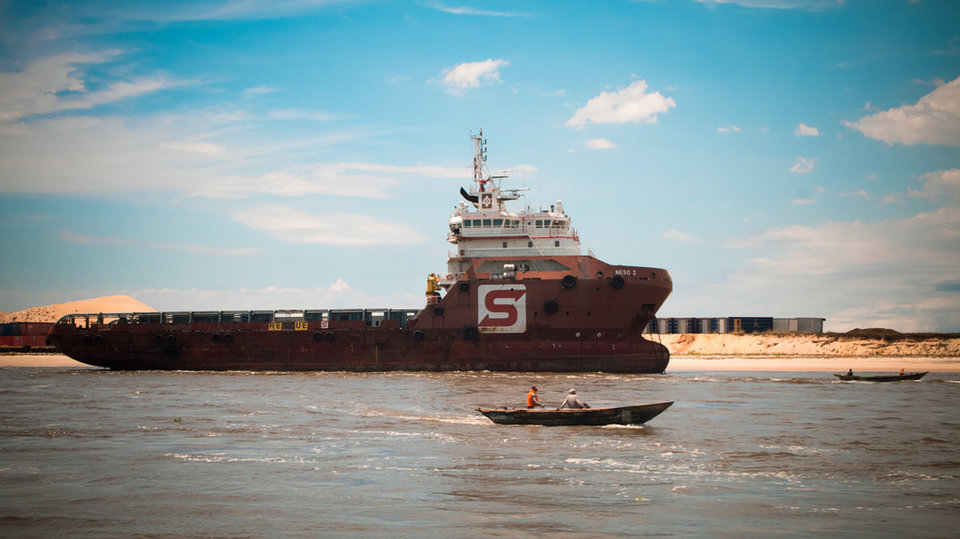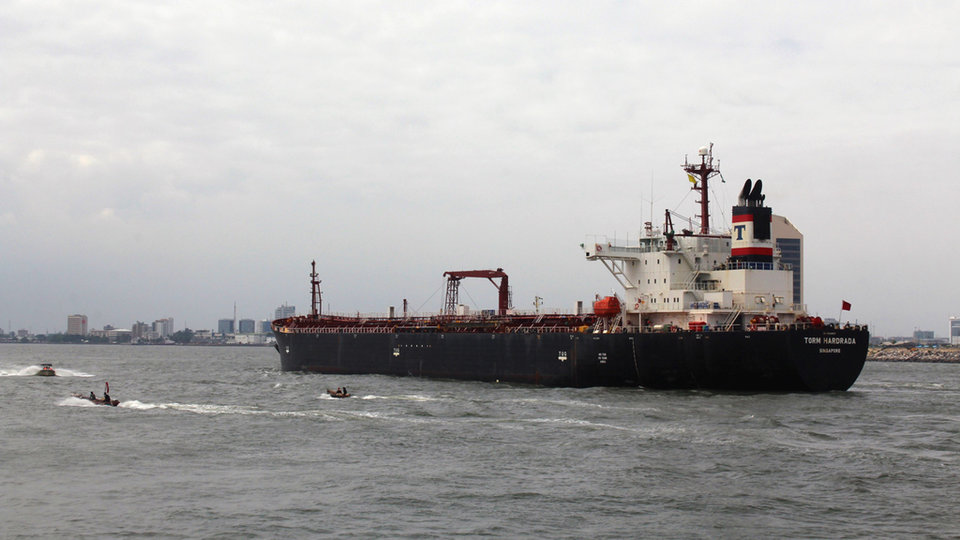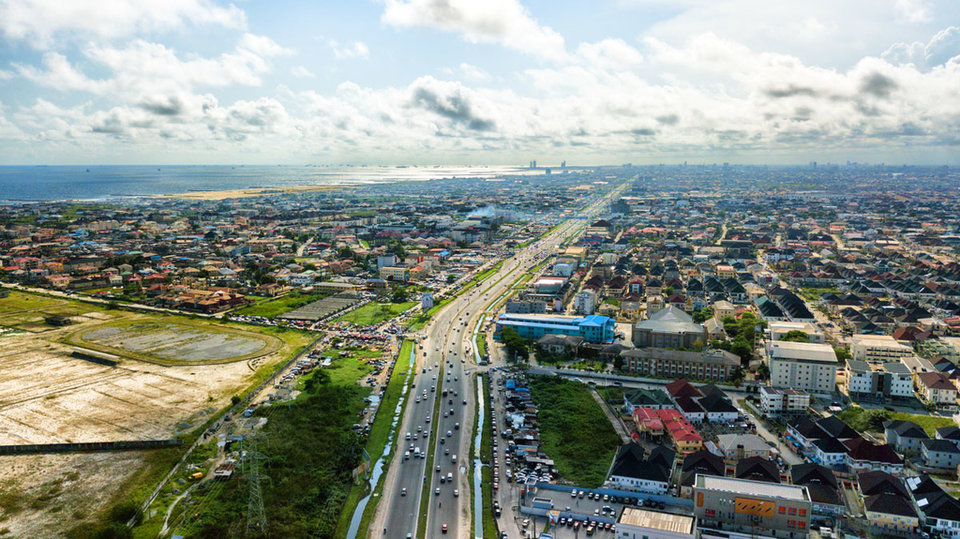Ports
Nigerian ports:
forging a new shipping future in West Africa
Nigeria holds a leading position within the West African maritime sector, for which it acts as a key gateway to Europe. But with its six seaports struggling with capacity constraints and poor infrastructure, how is it working to enhance this position? Adele Berti finds out.
Image:
In November 2019,
the Nigerian Ports Authority (NPA) signed a collaboration agreement with Belgium’s Port of Antwerp in a bid to boost the potential of its six seaports and bolster its role as a leading maritime centre in West Africa.
As part of the agreement, the Port of Antwerp will advise the NPA on the development of the Port of Lagos, which it sees as crucial in handling cargo shipments to and from Europe. "We see a lot of potential in the port of Lagos,” said Port of Antwerp CEO Kristof Waterschoot at the time. “Thanks to the growing economy, the freight transport with Europe has increased substantially. By means of this collaboration, we can use our know-how to advise the port of Lagos in its further development.”
With over 8,000km of navigable inland and coastal channels – which help handle between 40% and 60% of cargo movements in the North and Central African subregion – Nigeria is a virtual goldmine to many European and international investors who may be looking to win contracts in the maritime sector.
Yet despite these encouraging signs, port activity in the country remains limited due to ageing infrastructure, capacity issues and scarce technological advancements. Now with the help of Antwerp, the NPA will be looking at addressing these issues if it wants to maintain its dominance within West Africa.
Lack of capacity could restrict recent increases in port traffic
Nigeria’s six major seaports are in the south of the country, which overlooks the Gulf of Guinea. In the first half of 2019, they all witnessed a sharp increase in freight volumes, which jointly grew by 8% to a cargo throughput of 38.5 million metric tonnes.
Following the government’s decision to shut down all land borders in an attempt to tackle smuggling, these figures have been increasing over the past few months, with the majority of imports and exports now happening via sea.
As a result, traffic is now unevenly distributed across the six ports, with the Port of Lagos receiving most vessels and the Eastern ports largely excluded.
To address the issue, the NPA recently announced plans to move a portion of ships to the eastern ports. “Efforts are being made to make the Eastern ports more viable,” a spokesperson for the company said in January, “because from what we have been seeing due to the border closure, more cargoes are now moving to the East and we hope to see more of that this year.”
Traffic is now unevenly distributed across the six ports, with the Port of Lagos receiving most vessels
Yet the situation is indicative of a more deeply rooted problem currently affecting Nigerian ports. As NPA managing director and CEO Hadiza Bala Usman said in September, these are all running out of space both within and outside their premises.
Adding to the problem, a recent tour organised by the International Monetary Fund and the Nigerian Shippers’ Council (NSC) shed light on the poor state of ports’ access roads and the largely inefficient operations. According to NSC executive secretary Hassan Bello, the state of affairs is also aggravated by obsolete scanners, corruption inside the NPA, and weak infrastructure.
A testament to this is a 2017/18 study from the NPA showing that despite posting revenues of $840m in 2017 – which helped trigger a 2.1% increase in gross domestic product – some $7bn was lost in the same year due to the ports’ inefficient operations and malfunctioning infrastructure.

A ship in the Tarkwa Bay near Lagos, Nigeria. Image: Kehinde Temitope Odutayo / Shutterstock.com
Change is on the cards
Having sealed the partnership with the Port of Antwerp, the NPA kicked off 2020 with a new set of plans aimed at improving conditions inside and outside the ports.
Alongside pledging to divert cargo traffic to the Eastern hubs, the authority will soon oversee a complete overhaul of operations across its facilities.
Announced by Nigerian Minister of State Transportation Gbemisola Saraki at the end of January, the plan is, however, yet to be defined. “Nigeria is supposed to be the biggest player and the cheapest player, but unfortunately, we are not,” Saraki told the media earlier this year. “But I assure you that changes will be witnessed as we will soon be efficient and effective.”
The authority will soon oversee a complete overhaul of operations across its facilities
According to the NSC’s Bello, future initiatives will also look at supporting a shift in focus from imports to exports. “By April or May, Apapa Port will be linked to rail and that will lead to a massive evacuation of cargoes. Cargoes are not supposed to be examined at the ports, the port is supposed to be a transit point,” he told local media outlet Leadership.
In addition, he said, hubs’ operations will need to be completely digitised to provide operators and stakeholders with “electronic data to be transported at the port of loading”.

A cargo ship arriving at the Apapa port in Lagos, Nigeria. Image: Dumbra / Shutterstock.com

The construction of a port at Lekki (pictured) could revolutionise Nigeria’s economy.
The Lekki Deep Sea Port project
In the coming months, Nigeria will primarily focus on building the Lekki Deep Sea Port, a pivotal project that the country hopes will give a substantial boost to its maritime sector.
Not having a deep sea port in the country has long been a cause of concern for the government, as it limits trade to small-sized vessels. “Another challenge that leads to cargo diversion in Nigeria has to do with the absence of deep seaports,” NPA’s Bala Usman explained at the Maritime Stakeholders Interactive Forum in Lagos last September, according to nigeriamaritime360.com. “Very large vessels cannot come and berth at our ports because depth of draft of about 17m does not exist in Nigerian waterways.”
The facility is expected to contribute over $200bn to the government’s finances
This deficiency has led to the approval of a new 90-hectare area near Lagos called the Lekki Deep Sea Port. Set for completion this year, the hub will feature three container berths, long dry bulk berths and three liquid berths, which will allow it to handle up to 1.5 million twenty-foot equivalent units of containers per year.
According to the Lekki project’s official website, the facility is also expected to contribute over $200bn to the government’s finances and create 170,000 jobs. Delivered by Singapore’s Tolaram Group and the China Harbour Engineering Company, it will help Nigerian ports to meet future demand for containers, which is expected to increase by 12.9% by 2025.
Finally, the project will become particularly useful in view of the imminent closure of the Rivers Port. This is expected to cease operations soon, having been deemed unsafe to operate as it reaches the end of its lifespan.